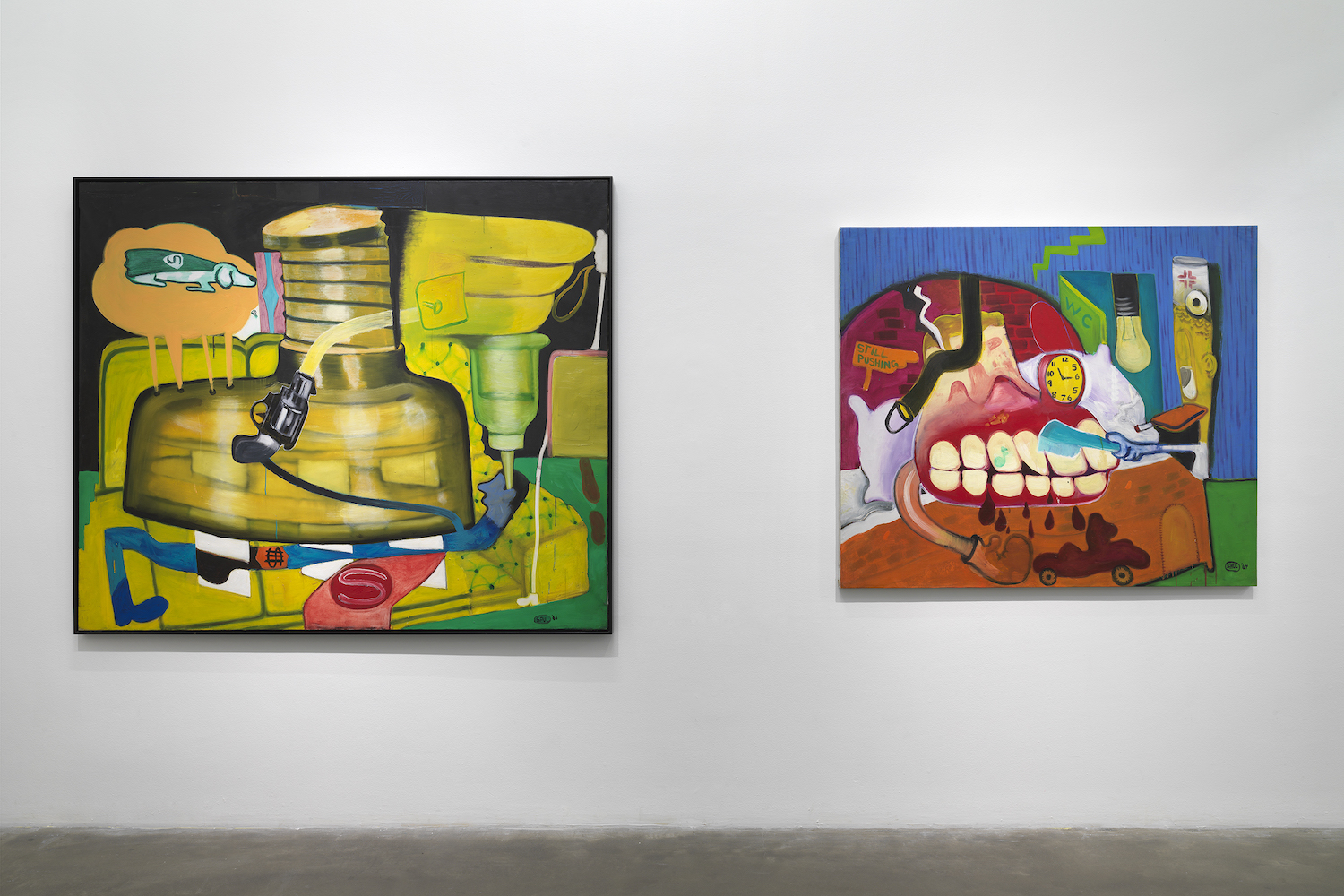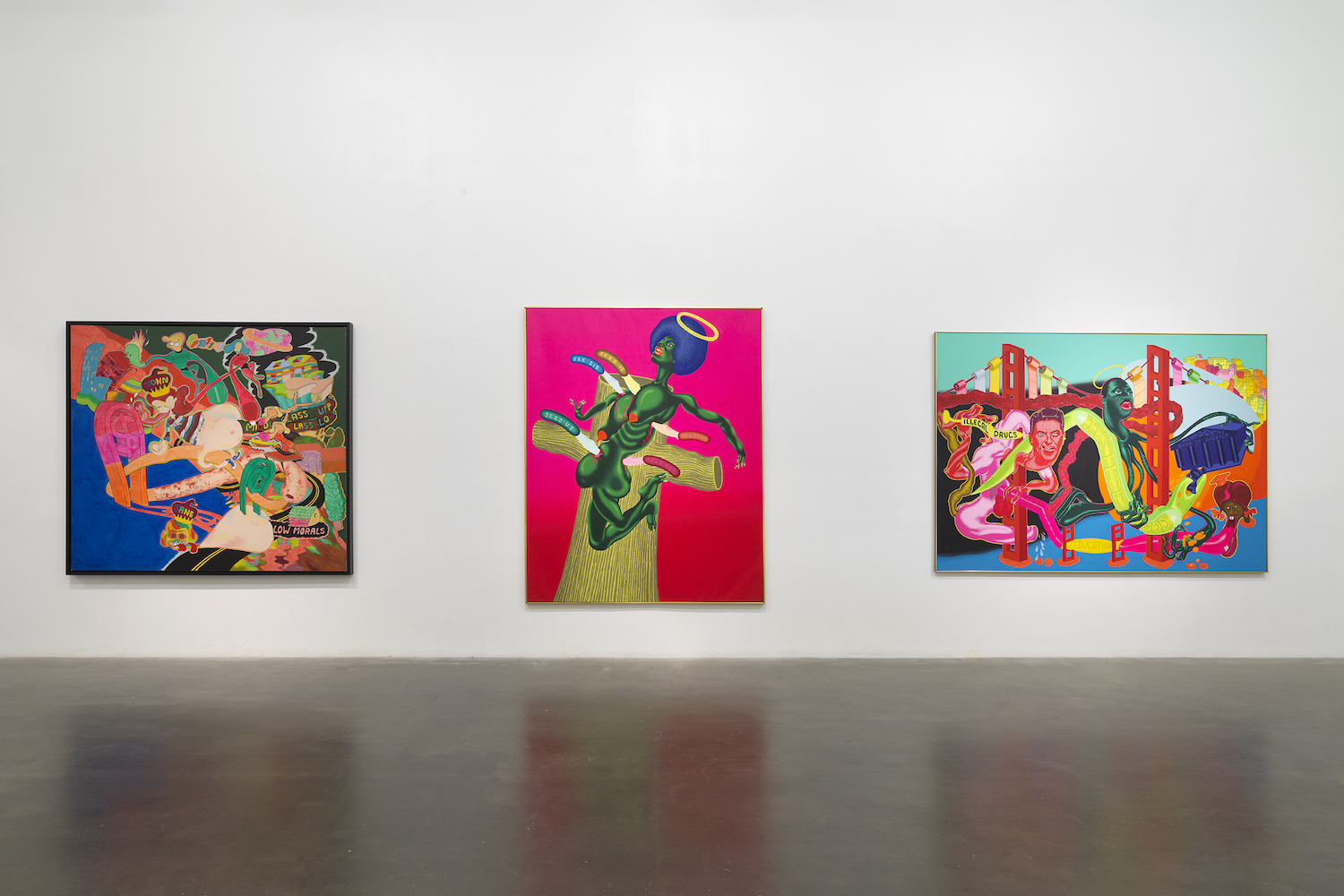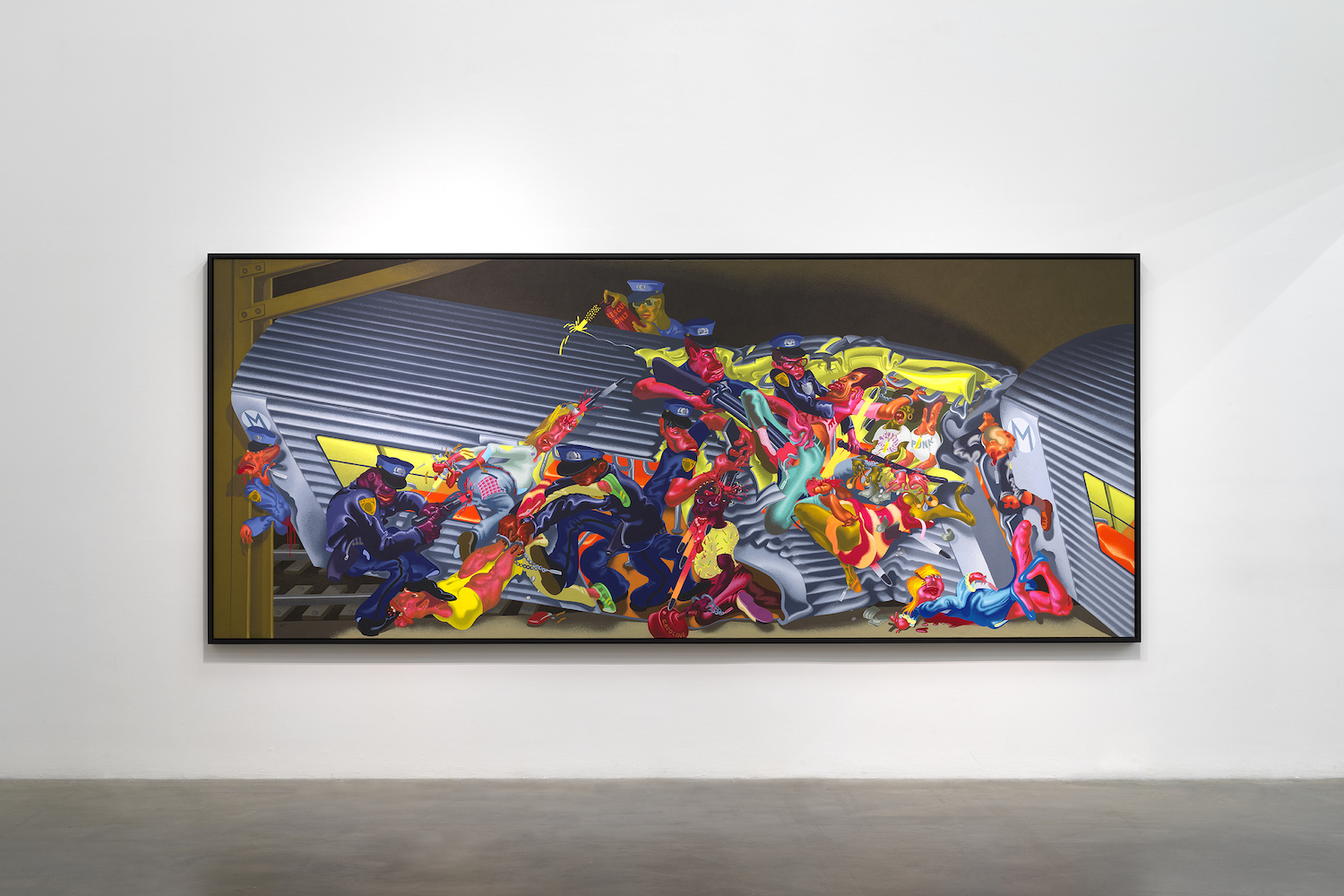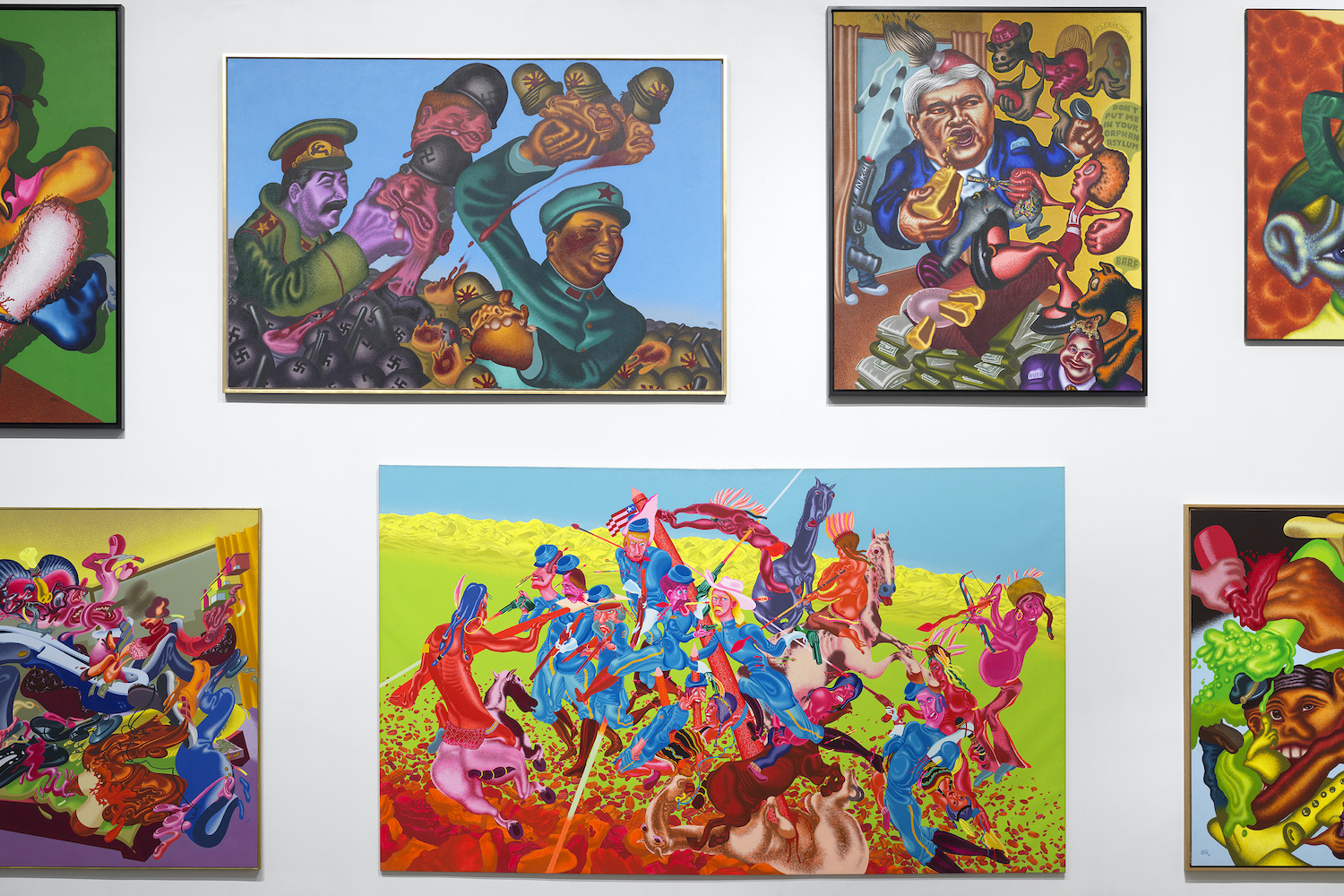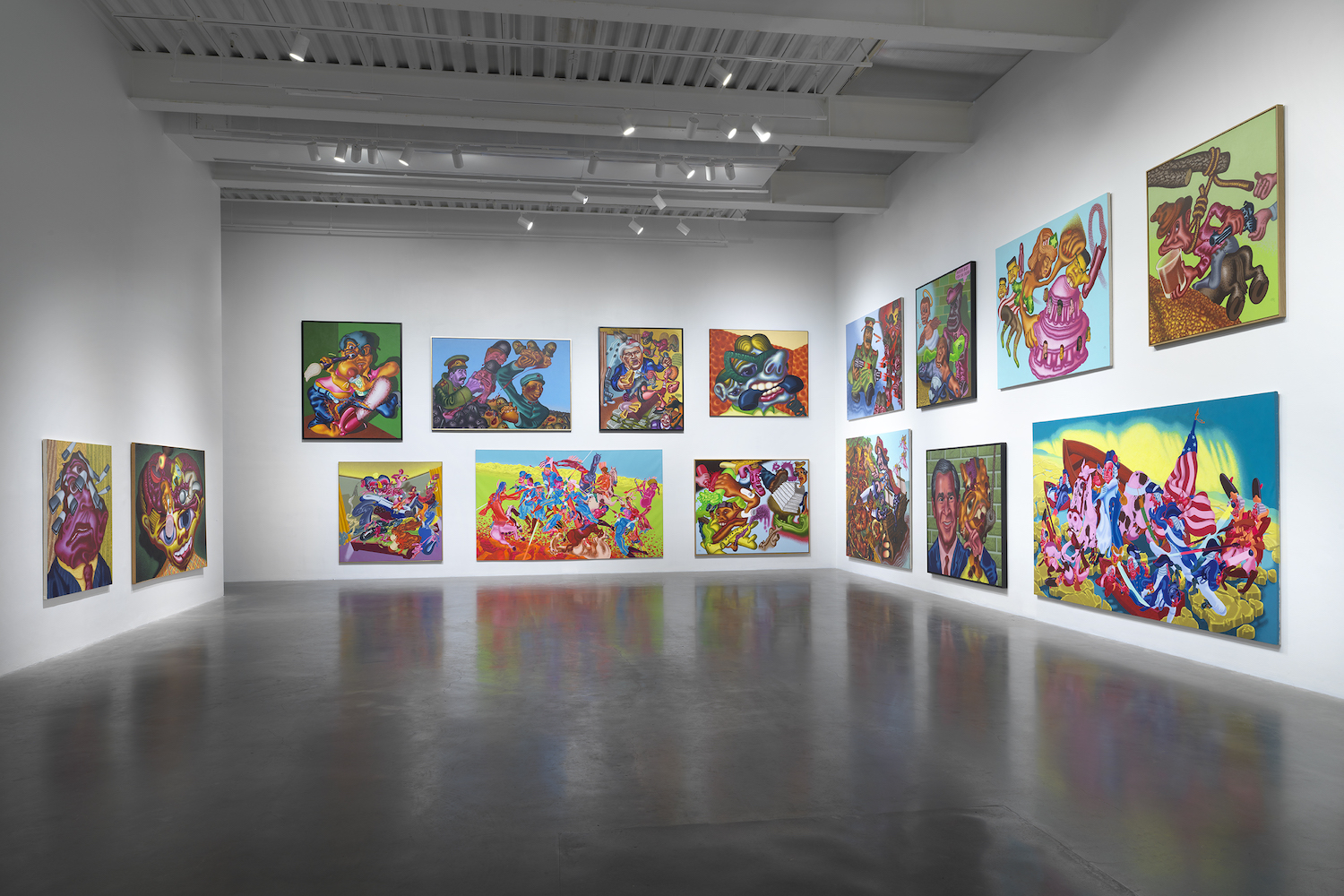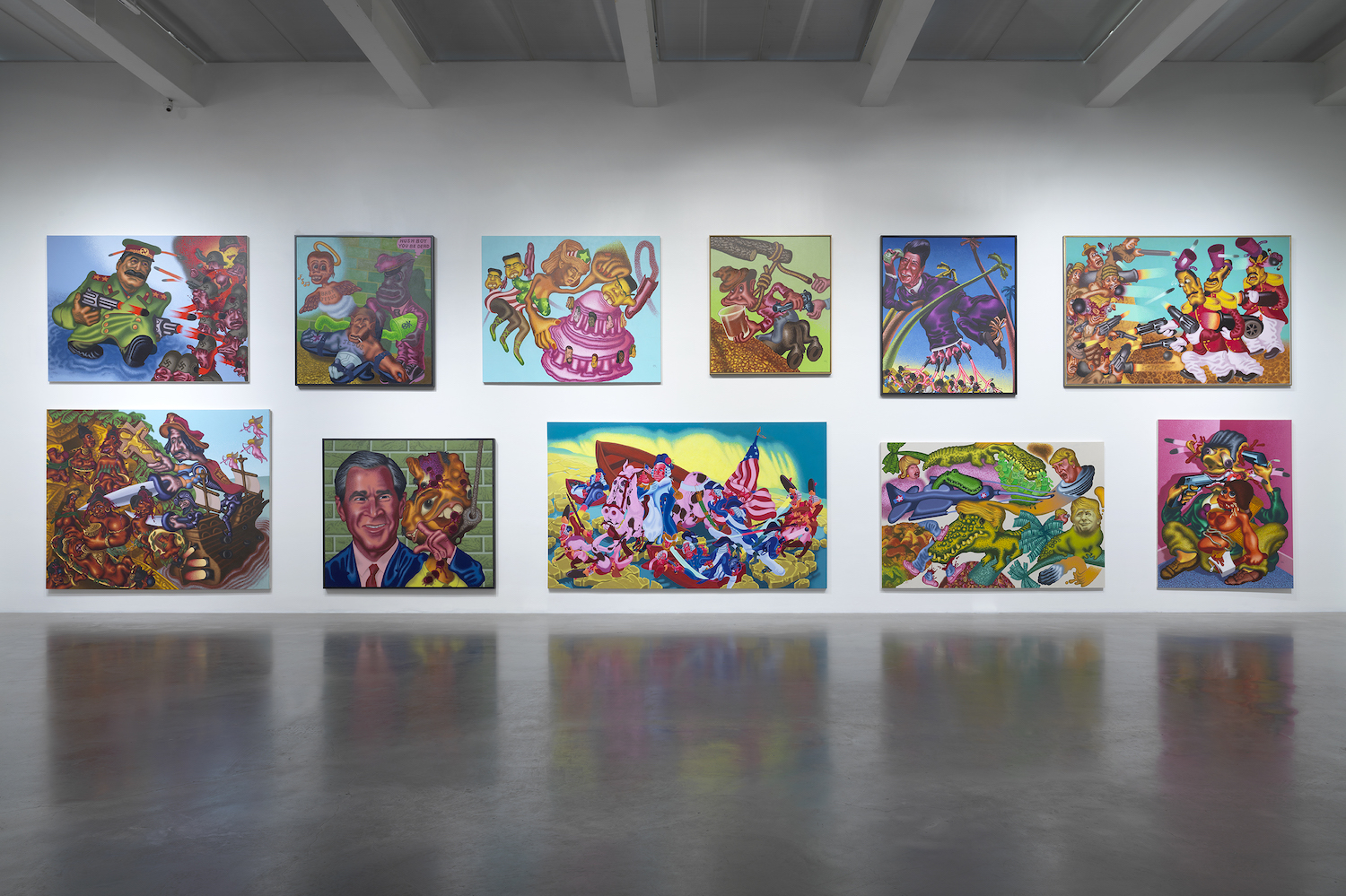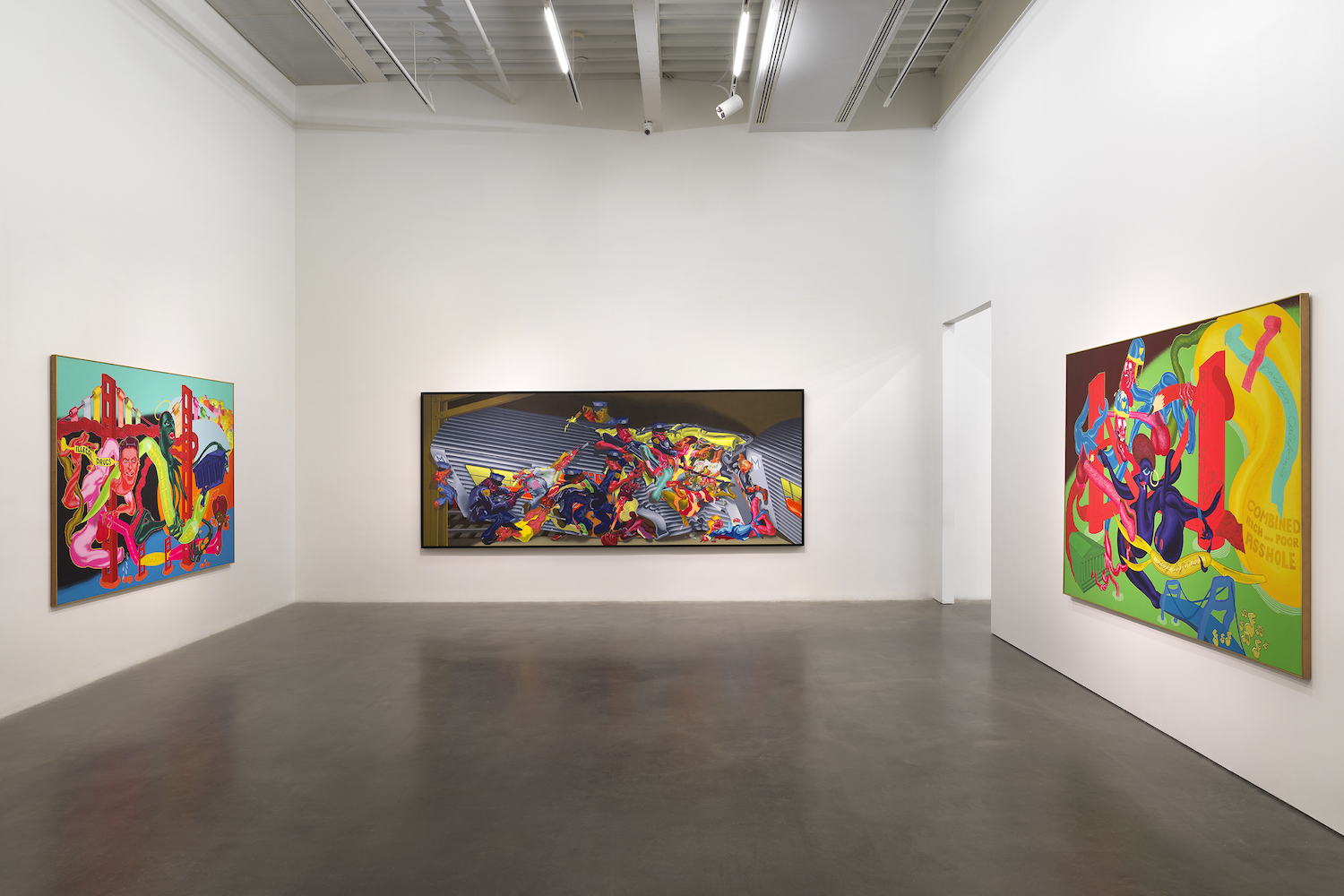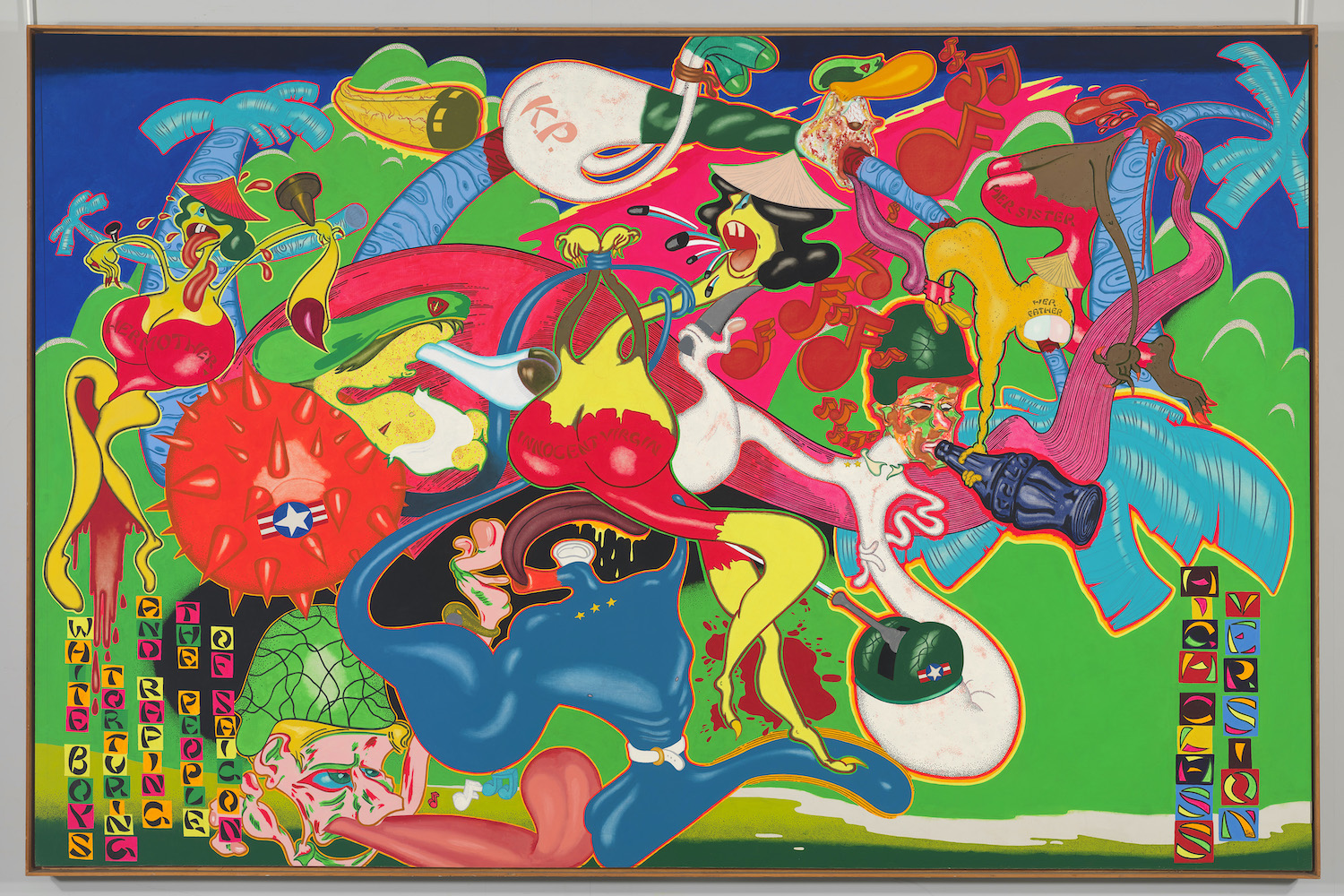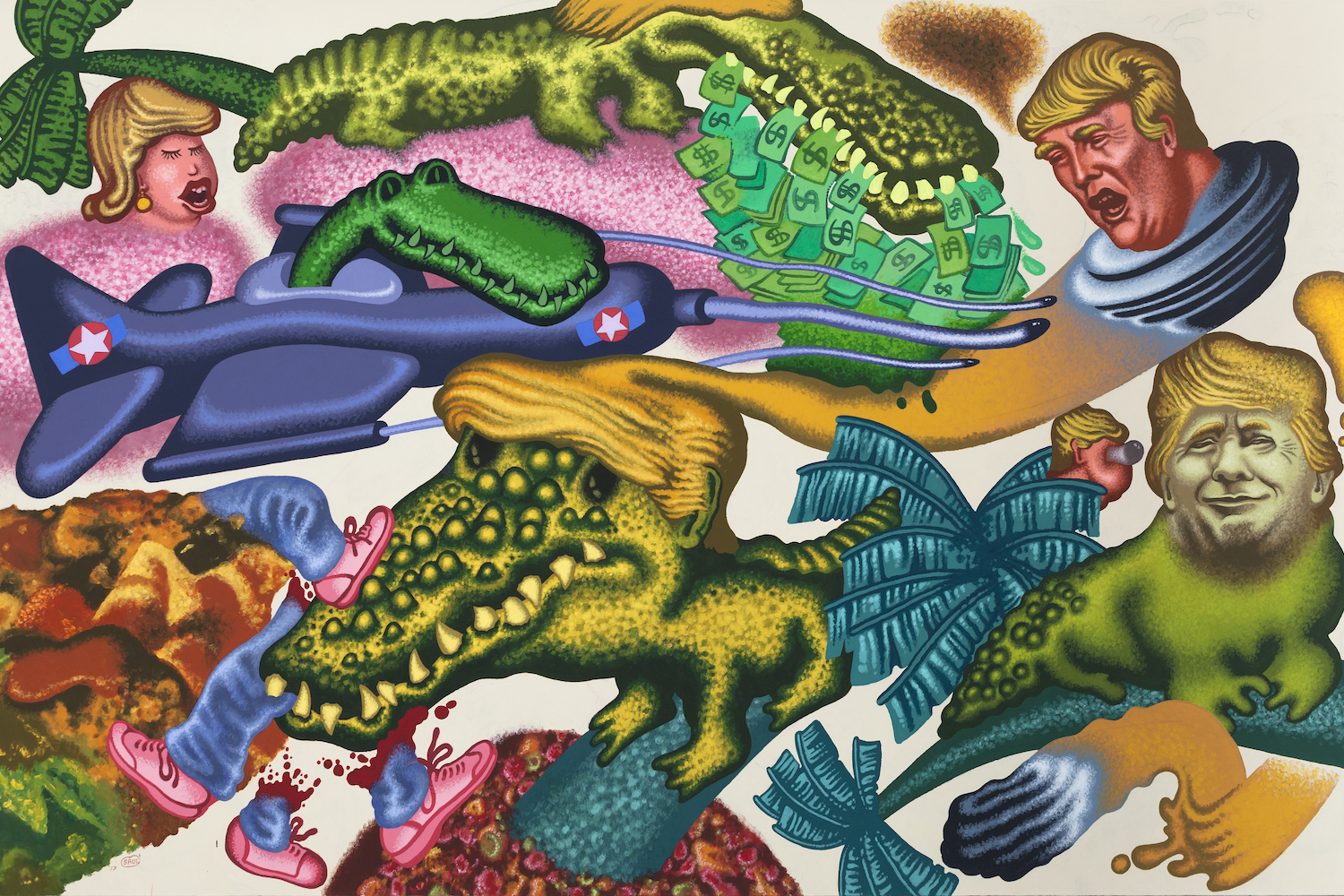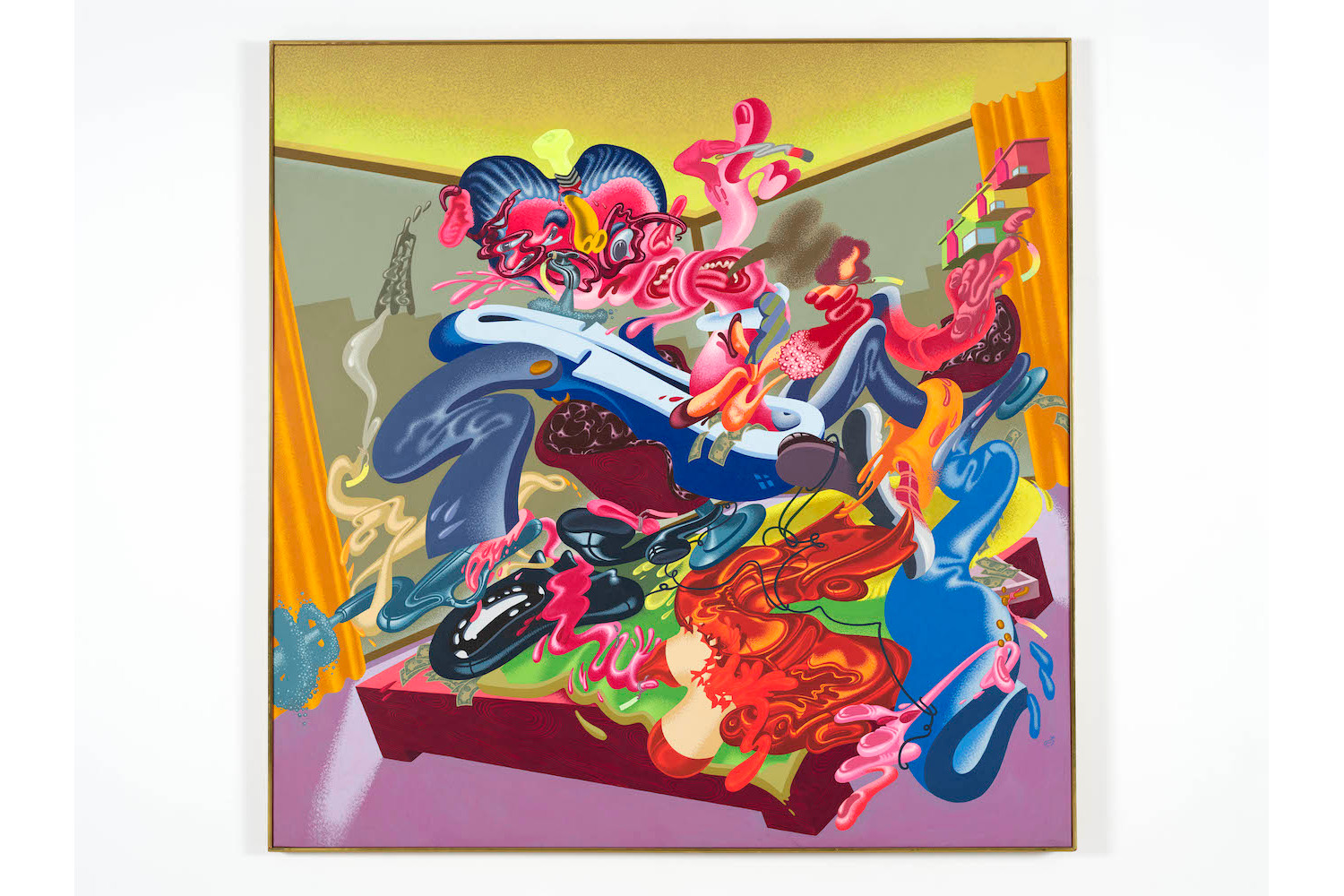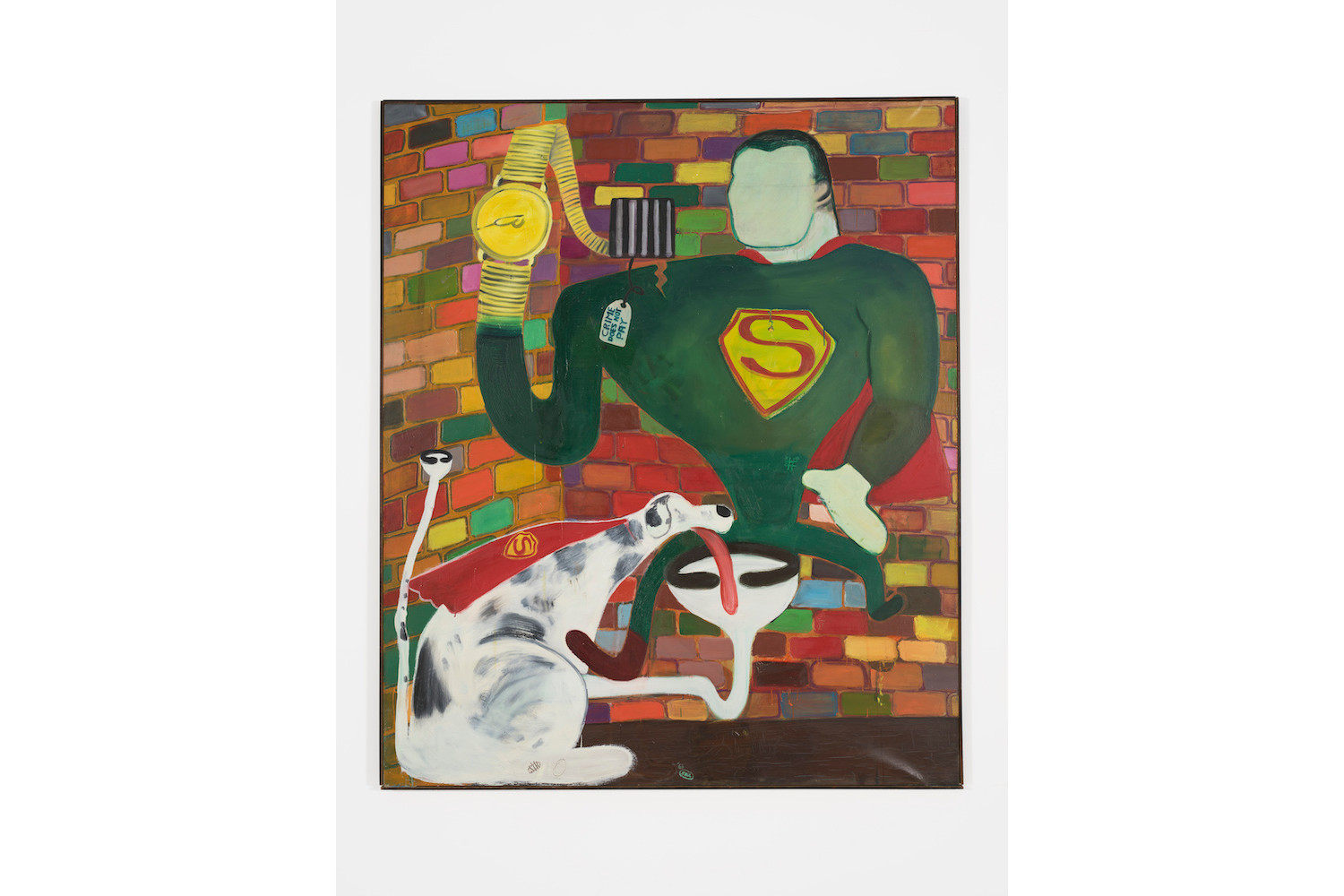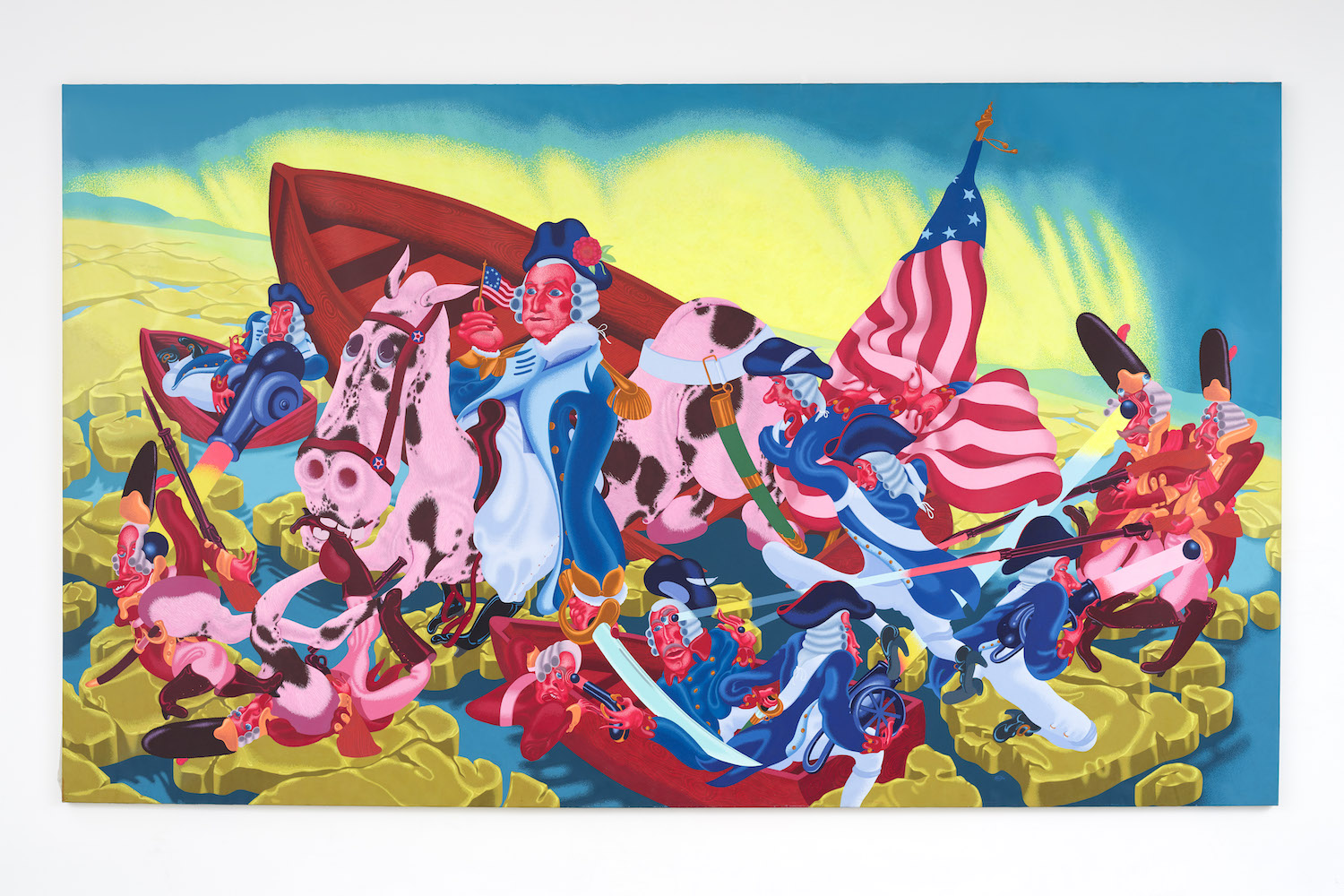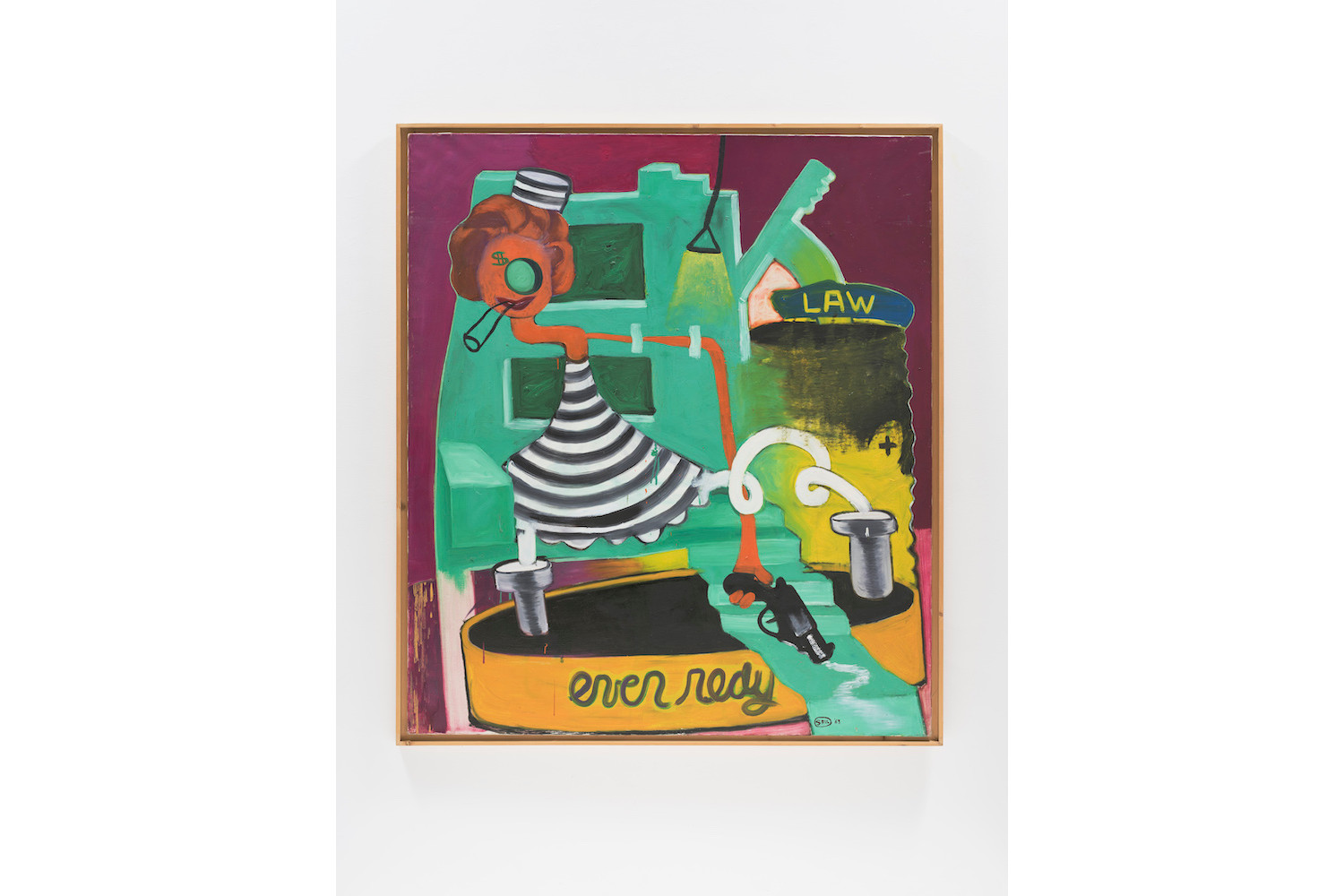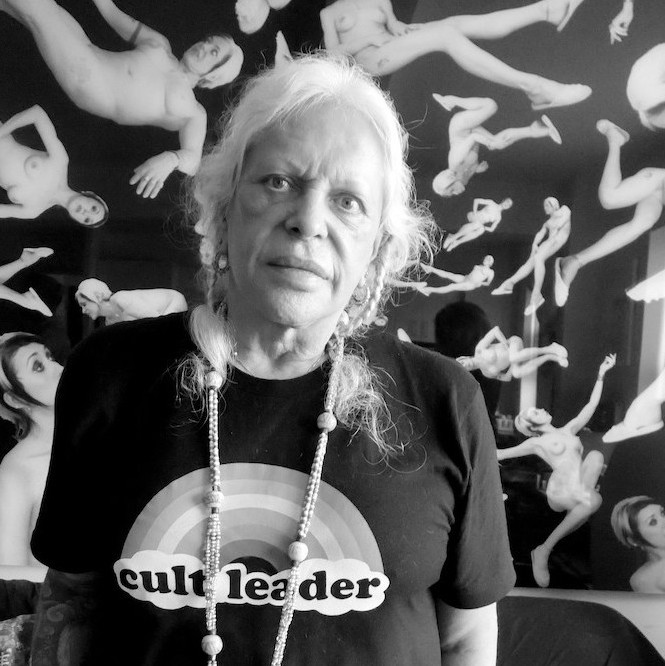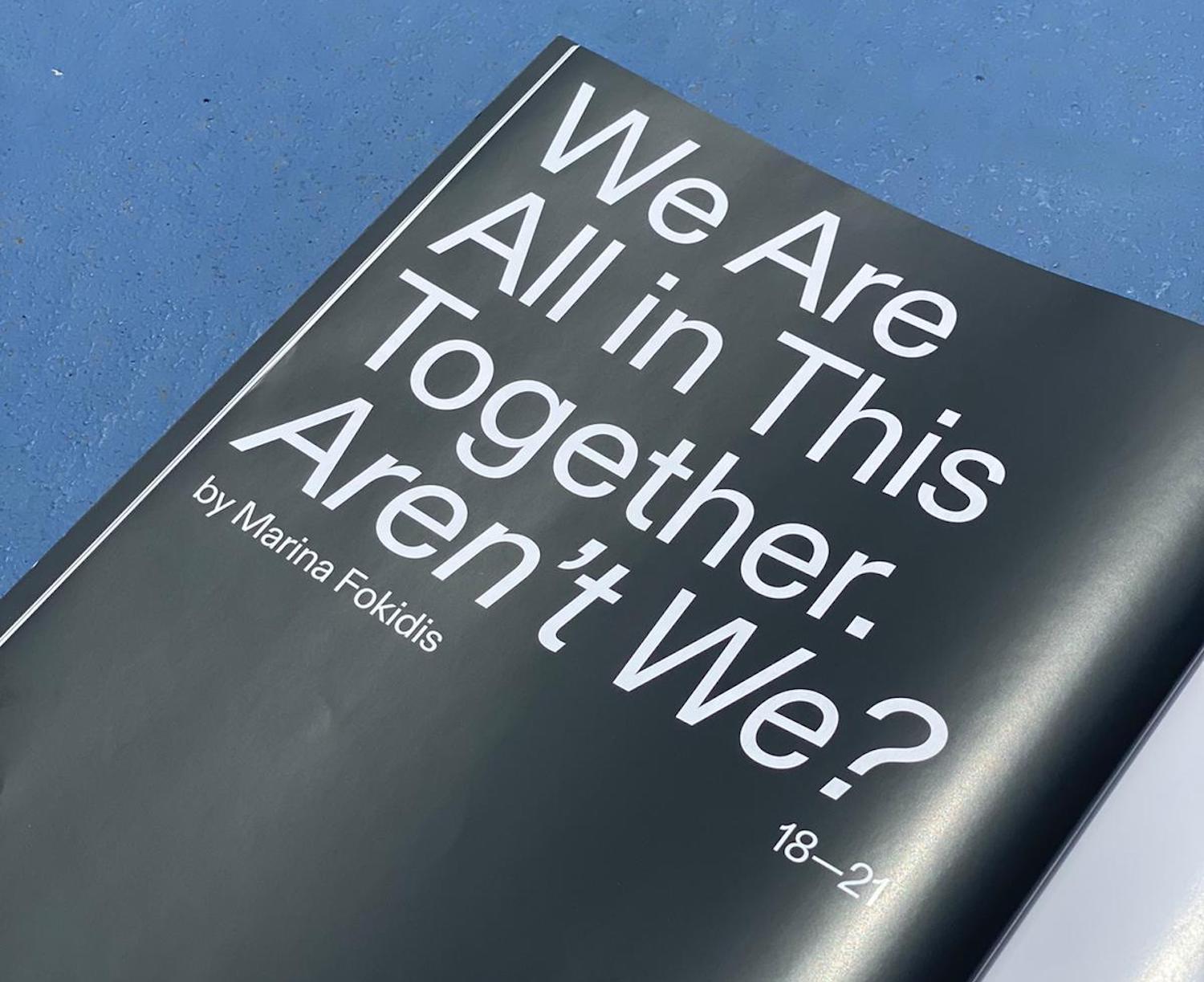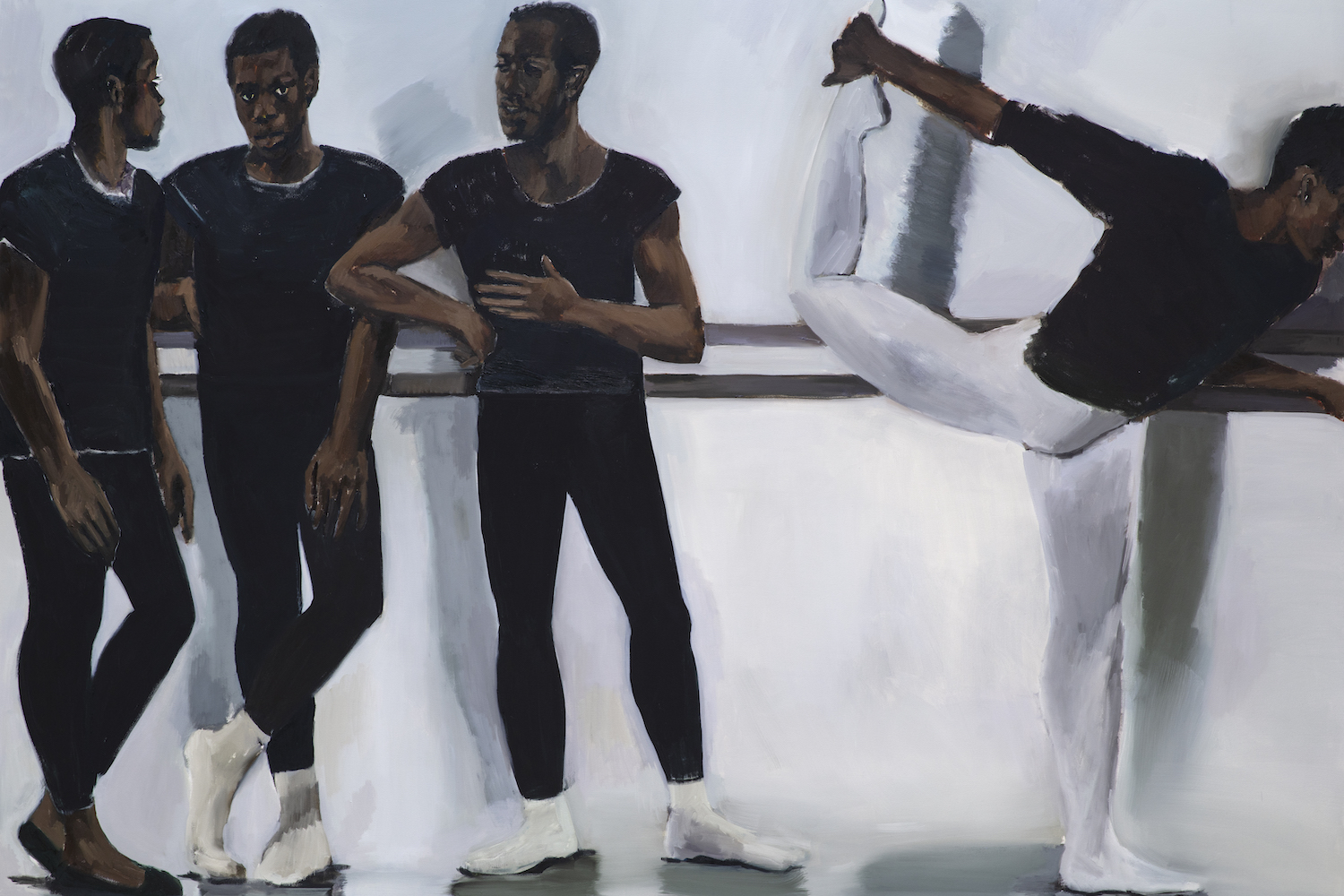Bearing organs, faces, fluids, and copious energy, Peter Saul’s paintings have a strange life of their own. If the paintings could talk, one might hear the sound of a dreadful and agitated laughter, straight from an amusement park in hell. “Crime and Punishment” — the artist’s retrospective at the New Museum — gathers sixty paintings from 1960 to the present day. They are joyful and cheeky depictions of the effervescence of modern life, displaying strange revelatory figures that personify the significant and the frivolous, the absurd and the punitive — blistery protrusions of a brain overly worried about the fate of the world.
Saul was born in San Francisco in 1934 but was never part of the psychedelic scene there. He said he was to old for it, and that he was “happy with [his] psychology” and so didn’t need to alter it. His work lives at the frontier of abstraction and figuration, where character becomes expression and vice versa.
The New Museum retrospective starts with his early work, including his “Ice Box” series that laid the groundwork for everything that would follow: the painting as a stage where objects become animated. Saul claims to have ignored his contemporaries, but Ice Box Number 1 (1960) recalls Philip Guston’s brushstroke, David Hockney’s palette, Rauschenberg’s flat composition, and Warhol’s incorporation of commercial elements.
Saul found his leitmotiv almost from the get go: to portray the blind and unforgiving brutality of American politics and culture. Works like Man in Electric Chair (1964) and Saigon (1967) fathom the role of the electric chair and the Vietnam War in the collective psyche. He starts including political leaders (Washington, Reagan, Bush Jr., Trump), yet his affinity for 1930s comic characters like Superman and Smokey Stover contrasts sarcastically with these historical and political elements, stressing the complex and paradoxical nature of modern American culture. Is violence more vicious with a humorous tone?
What is Saul’s intention anyway? Is he willing to achieve automatic painting, like the Surrealists who had “automatic writing”? Does he want to portray a noisy, doomed, and panicking civilization? Is he interested in a dreamlike festival of caricatures in Day-Glo colors? Peter Halley, another avid Day-Glo user, makes paintings that are rigorous and impermeable, in marked contrast to Saul’s liquid, almost slimy surfaces. In his paintings from the 1970s until today, each character appears as an extension of a nearby figure, in constant transformation, like in John Carpenter’s The Thing. No figure is isolated: bodies are always morphing, mutating, part of a bigger self, like a hallucinatory epiphany regarding the great universal truth beneath all things. This fluidity connecting different entities allows us to linger on different realms at the same time, tying humor, politics, fear, and symbolism into a gruesome yet hilarious amalgam.

